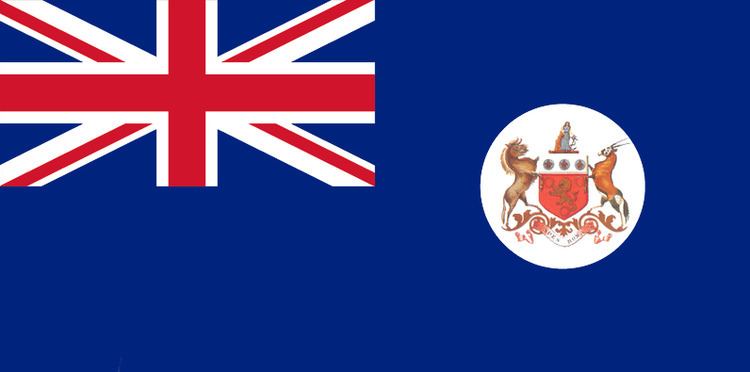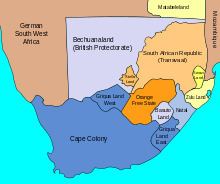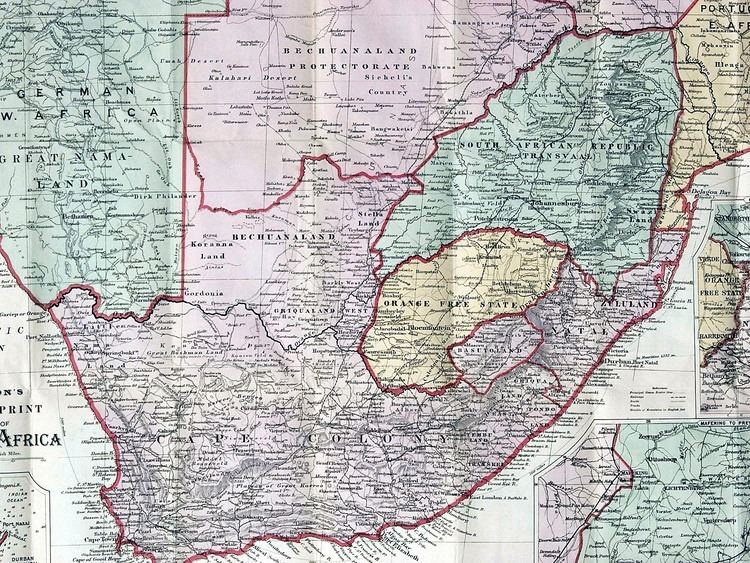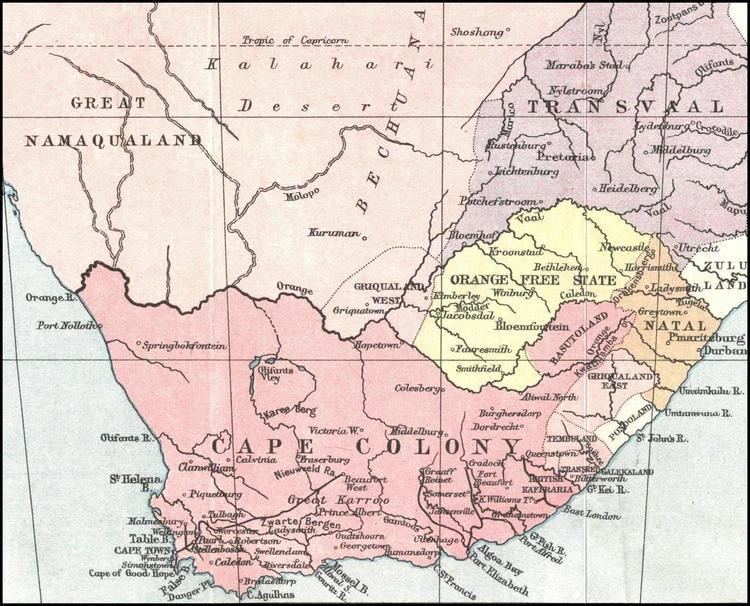1795–1820 George III 1830–1837 William IV Area 331,900 km² | 1820–1830 George IV Founded 1795 Currency Pound sterling Date dissolved 1910 | |
 | ||
Religion | ||
Slavery in the cape of good hope south africa
The Cape of Good Hope, also known as the Cape Colony (Dutch: Kaapkolonie), was a British colony in present-day South Africa and Namibia, named after the Cape of Good Hope. The British colony was preceded by an earlier Dutch colony of the same name, the Kaap de Goede Hoop, established in 1652 by the Dutch East India Company. The Dutch lost the colony to Britain following the 1795 Battle of Muizenberg, but had it returned following the 1802 Peace of Amiens. It was re-occupied by the British following the Battle of Blaauwberg in 1806, and British possession affirmed with the Anglo-Dutch Treaty of 1814.
Contents
- Slavery in the cape of good hope south africa
- History of the cape colony before 1806
- Dutch settlement
- British conquest
- British Colonisation
- Responsible Government
- British occupation 1st 17971804
- Batavian Republic Dutch colony 18031806
- British occupation 2nd 18061814
- British colony 18141910
- Prime Ministers of the Cape of Good Hope 18721910
- 1904 Census
- References

The Cape of Good Hope then remained in the British Empire, becoming self-governing in 1872, and uniting with three other colonies to form the Union of South Africa in 1910. It then was renamed the Cape of Good Hope Province. South Africa became fully independent in 1931 by the Statute of Westminster. Following the 1994 creation of the present-day South African provinces, the Cape of Good Hope Province was partitioned into the Eastern Cape, Northern Cape, and Western Cape, with smaller parts in North West province.

The Cape of Good Hope was coextensive with the later Cape of Good Hope Province, stretching from the Atlantic coast inland and eastward along the southern coast, constituting about half of modern South Africa: the final eastern boundary, after several wars against the Xhosa, stood at the Fish River. In the north, the Orange River, also known as the Gariep River, served as the boundary for some time, although some land between the river and the southern boundary of Botswana was later added to it. From 1878, the colony also included the enclave of Walvis Bay and the Penguin Islands, both in what is now Namibia.

History of the cape colony before 1806
Dutch settlement

Dutch East India Company (V>o>c) traders, under the command of Jan van Riebeeck, were the first people to establish a European settlement in South Africa. The Cape settlement was established by them in 1652 as a re-supply point and way-station for Dutch East India Company vessels on their way back and forth between the Netherlands and Batavia (Jakarta) in the Dutch East Indies. The support station gradually became a settler community, and the forebears of the Afrikaners, an ethnic group in South Africa.
The local Khoikhoi had neither a strong political organisation nor an economic base beyond their herds. They bartered livestock freely to Dutch ships but, as Company employees established farms, the Khoikhoi became displaced in the ship-related commerce. Conflicts led to the consolidation of European land holdings and a greater degree of Khoikhoi society breakdown. Military success led to even greater Dutch East India Company control of the Khoikhoi by the 1670s and the Khoikhoi became the chief source of colonial wage labour.
The area around the Company station in-filled and nomadic European livestock farmers, or Trekboeren, moved more widely afield, leaving the richer, but limited, farming lands of the coast for the drier interior tableland where they competed with the Khoikhoi cattle herders for the best grazing lands. By 1700, the traditional Khoikhoi lifestyle of pastoralism had disappeared and following British rule in 1795, the establishment of the Cape's socio-political foundations were firmly laid.
British conquest
In 1795, France occupied the Seven Provinces of the Netherlands, the mother country of the Dutch East India Company. This prompted Great Britain to occupy the territory in 1795 as a way to better control the seas in order stop any potential French attempt to reach India. The British sent a fleet of nine warships which anchored at Simon's Town and, following the defeat of the Dutch militia at the Battle of Muizenberg, took control of the territory. The Dutch East India Company transferred its territories and claims to the Batavian Republic (the Revolutionary period Dutch state) in 1798, and ceased to exist in 1799. Improving relations between Britain and Napoleonic France, and its vassal state the Batavian Republic, led the British to hand the Cape of Good Hope over to the Batavian Republic in 1803, under the terms of the Treaty of Amiens.
In 1806, the Cape, now nominally controlled by the Batavian Republic, was occupied again by the British after their victory in the Battle of Blaauwberg. The temporary peace between Britain and Napoleonic France had crumbled into open hostilities, whilst Napoleon had been strengthening his influence on the Batavian Republic (which Napoleon would subsequently abolish later the same year). The British, who set up a colony on 8 January 1806, hoped to keep Napoleon out of the Cape, and to control the Far East trade routes. In 1814 the Dutch government formally ceded sovereignty over the Cape to the British, under the terms of the Convention of London.
British Colonisation
The British started to settle the eastern border of the colony, with the arrival in Port Elizabeth of the 1820 Settlers. They also began to introduce the first rudimentary rights for the Cape's Black African population and, in 1833, abolished slavery. The resentment that the Dutch farmers felt against this social change, as well as the imposition of English language and culture, caused them to trek inland en masse. This was known as the Great Trek, and the migrating Afrikaners settled inland, forming the "Boer republics" of Transvaal and the Orange Free State.
British immigration continued in the Cape, even as many of the Afrikaners continued to trek inland, and the ending of the British East India Company's monopoly on trade led to economic growth. At the same time, the long series of border wars fought against the Xhosa people of the Cape's eastern frontier finally died down when the Xhosa partook in a mass destruction of their own crops and cattle, in the belief that this would cause their spirits to appear and defeat the whites. The resulting famine crippled Xhosa resistance and ushered in a long period of stability on the border.
Peace and prosperity led to a desire for political independence. In 1854, the Cape of Good Hope elected its first parliament, on the basis of the multi-racial Cape Qualified Franchise. Cape residents qualified as voters based on a universal minimum level of property ownership, regardless of race.
The fact that executive power remained completely in the authority of the British governor did not relieve tensions in the colony between its eastern and western sections.
Responsible Government
In 1872, after a long political battle, the Cape of Good Hope achieved "Responsible Government" under its first Prime Minister, John Molteno. Henceforth, an elected Prime Minister and his cabinet had total responsibility for the affairs of the country. A period of strong economic growth and social development ensued, and the eastern-western division was largely laid to rest. The system of multi-racial franchise also began a slow and fragile growth in political inclusiveness, and ethnic tensions subsided. In 1877, the state expanded by annexing Griqualand West and Griqualand East.
However, the discovery of diamonds around Kimberley and gold in the Transvaal led to a return to instability, particularly because they fuelled the rise to power of the ambitious imperialist Cecil Rhodes. On becoming the Cape's Prime Minister, he instigated a rapid expansion of British influence into the hinterland. In particular, he sought to engineer the conquest of the Transvaal, and although his ill-fated Jameson Raid failed and brought down his government, it led to the Second Boer War and British conquest at the turn of the century. The politics of the colony consequently came to be increasingly dominated by tensions between the British colonists and the Afrikaners. Rhodes also brought in the first formal restrictions on the political rights of the Cape of Good Hope's Black African citizens.
The Cape of Good Hope remained nominally under British rule until the formation of the Union of South Africa in 1910, when it became the Cape of Good Hope Province, better known as the Cape Province.
British occupation (1st, 1797–1804)
Batavian Republic (Dutch colony) (1803–1806)
British occupation (2nd, 1806–1814)
British colony (1814–1910)
The post of High Commissioner for Southern Africa was also held from 27 January 1847 to 6 March 1901 by the Governor of the Cape of Good Hope. The post of Governor of the Cape of Good Hope became extinct on 31 May 1910, when it joined the Union of South Africa.
Prime Ministers of the Cape of Good Hope (1872–1910)
The post of prime minister of the Cape of Good Hope also became extinct on 31 May 1910, when it joined the Union of South Africa.
1904 Census
Population Figures for the 1904 Census. Source:
